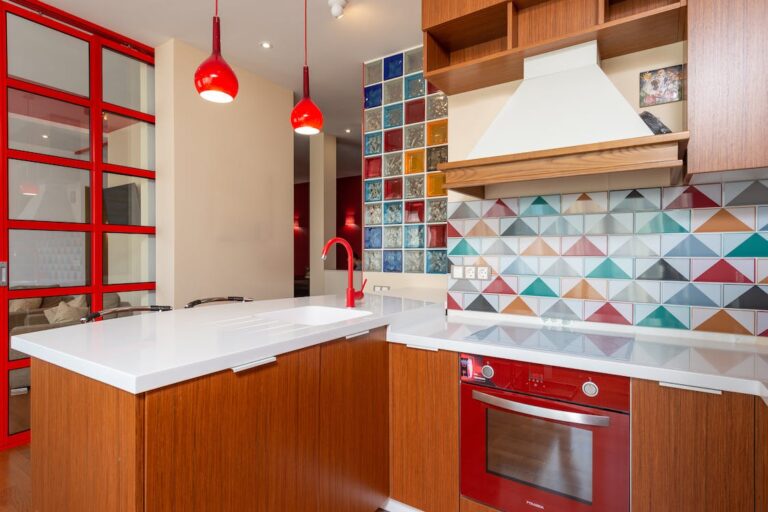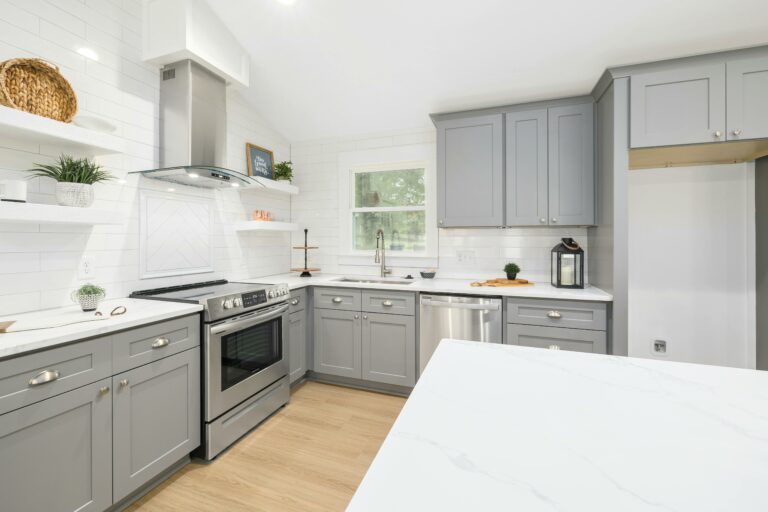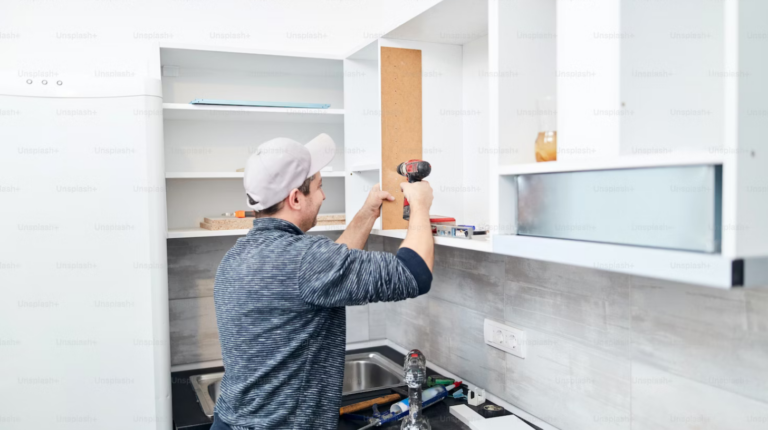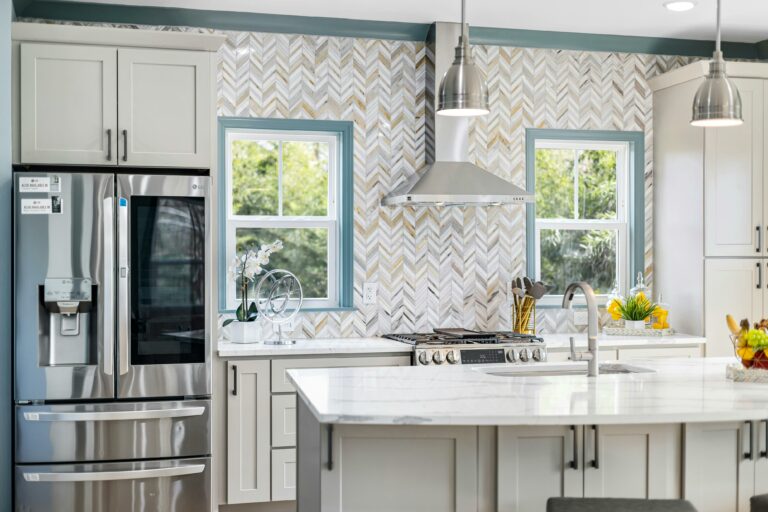Efficient Kitchen Layouts That Maximize Space and Functionality
In today’s fast-paced world, a well-designed kitchen is an essential asset for any homeowner or chef. Whether you’re a culinary expert preparing lavish meals or simply someone who enjoys experimenting with new recipes, having an efficient kitchen layout can make all the difference in maximizing space and functionality.
You may be wondering how to optimize your kitchen layout to create a space that seamlessly accommodates your cooking needs. Fortunately, there are various design trends and strategies that can help you achieve an efficient kitchen layout.
Table of Contents
- 1 Kitchen Layouts That Maximize Space
- 2 Kitchen Cabinet Trends for 2024
- 3 Open-Concept Kitchens
- 4 Optimizing Workflow in Restaurant Kitchens
- 5 Efficient Layouts for Maximizing Countertop Space
- 6 Creating an Efficient Kitchen Layout
- 7 Efficiency in Small Kitchens
- 8 Considerations for Less Efficient Layouts
- 9 Conclusion
- 10 Frequently Asked Questions
Kitchen Layouts That Maximize Space
In this article, we will explore the latest kitchen cabinet trends for 2024, the benefits of open-concept kitchens, techniques for optimizing workflow in restaurant kitchens, efficient layouts for maximizing countertop space, tips for creating an efficient kitchen layout that maximize space, strategies for efficiency in small kitchens, and considerations for less efficient layouts. Whether you’re remodeling your current kitchen or designing a new one, we’ve got you covered with expert insights and practical advice. So, let’s dive in and discover how you can transform your kitchen into a space that not only looks fabulous but also functions flawlessly.
Kitchen Cabinet Trends for 2024

kitchen cabinet trends for 2024 is all set to bring in exciting trends for kitchen cabinets. Whether you’re planning a complete remodel or looking to make a few updates, staying on top of the latest trends can help you create a stylish and functional kitchen space. In this article, we’ll explore three top kitchen cabinet trends for 2024 that are sure to inspire your imagination.
Wood Grain
One of the biggest and most enduring in kitchen cabinet trends for 2024 is the use of wood grain finishes. Wood not only adds warmth and character to a kitchen, but it also creates a timeless and organic look that never goes out of style. In 2024, we can expect to see a surge in popularity for cabinets with natural wood grains, including oak, walnut, and birch.
- Sustainable and eco-friendly: As environmental consciousness and sustainable practices gain momentum, more homeowners are opting for cabinets made from reclaimed or responsibly sourced wood. This not only creates a unique and earthy aesthetic but also helps to reduce the carbon footprint.
- Mixing textures: In 2024, designers are experimenting with combining different textures within kitchen cabinets. For instance, you might see a combination of smooth and rough wood grains or even a mix of wood and metal finishes, creating an eclectic and visually interesting look.
- Natural finishes: Another trend is the use of natural finishes that allow the beauty of the wood grain to shine through. Instead of heavily stained or painted cabinets, homeowners are opting for transparent or lightly stained finishes that highlight the natural patterns and textures of the wood.
Creamy Taupes and Off-Whites
Neutral colors have always been a popular choice for kitchen cabinets trends for 2024, creamy taupes and off-whites are taking center stage. These soft and soothing hues create a sense of calmness while still adding warmth and elegance to the kitchen space.
- Versatility: Creamy taupes and off-whites are incredibly versatile, making them an excellent choice for any kitchen style, whether it’s modern, traditional, or transitional. These neutral shades can be easily paired with different countertop materials, flooring options, and backsplashes, allowing for endless design possibilities.
- Timeless appeal: Unlike bold and trendy colors that may go out of style, creamy taupes and off-whites have a timeless appeal that can withstand changing design trends. Opting for these neutral hues ensures that your kitchen cabinets will remain stylish for years to come.
Orange and Red Undertones
For those who crave a pop of color in their kitchen, orange and red undertones are predicted to be a hit in 2024. These vibrant and energetic shades create a bold statement and can instantly transform a dull kitchen into a vibrant and inviting space.
- Accent cabinets: Incorporating cabinets with orange or red undertones as accent pieces can add a playful and eye-catching element to your kitchen. Consider using them for a kitchen island, open shelving, or even for a single focal point wall.
- Pairing with neutrals: While orange and red undertones provide a vibrant punch of color, it’s essential to balance them with neutral hues to avoid overwhelming the space. Pairing them with creamy taupes and off-whites, as mentioned earlier, can create a visually pleasing contrast that enhances the overall aesthetics.
- Warm and inviting: Orange and red undertones evoke feelings of warmth and energy, making them a perfect choice for kitchens where family and friends gather. By incorporating these shades, you can infuse your kitchen with a welcoming atmosphere that exudes personality and flair.
As you plan your kitchen cabinet trends for 2024, keep in mind that functionality is just as important as style. Handle-free options and invisible storage are gaining popularity and can optimize kitchen storage space, ensuring that your cabinets not only look good but also work well for your needs.
With these exciting kitchen cabinet trends for 2024, you’ll be able to create a beautiful and functional kitchen space that reflects your personal style. So, get ready to embrace the natural beauty of wood grain, the elegance of creamy taupes, and the vibrancy of orange and red undertones as you transform your kitchen into a trendy and inviting haven.
Also Read : Small Kitchen, Big Style: Design Ideas for Small Kitchen
Open-Concept Kitchens

Open-concept kitchens have become increasingly popular in recent years, and for good reason. This design trend breaks down the barriers between the kitchen and the rest of the living space, creating a seamless flow that promotes togetherness and a sense of spaciousness. Whether you’re a homeowner looking to remodel your kitchen or a renter dreaming of a more open living space, here are some compelling reasons why open-concept kitchens are worth considering.
- Enhanced Social Interactions: With an open-concept kitchen, you no longer have to feel isolated from your guests or family members while preparing a meal. You can now engage in conversations, watch TV, or keep an eye on the kids as you work in the kitchen. This design fosters social interactions and makes entertaining a breeze.
- Improved Natural Light: Removing walls and other visual barriers allows natural light to flow freely throughout the space. More windows and unobstructed views can create a brighter and more inviting ambiance in your kitchen. Say goodbye to cooking in a dark and enclosed space!
- Expanding Visual Space: By eliminating walls, an open-concept kitchen visually expands the entire living area. This layout creates a sense of spaciousness that can make even small spaces feel larger. It’s a perfect solution for apartments or homes with limited square footage.
- Flexible Layout Options: With walls out of the way, you have greater design flexibility when it comes to arranging your furniture and kitchen layout. You can easily create a seamless transition between the kitchen, dining area, and living space, allowing you to maximize your floor plan and tailor it to your specific needs.
- Improved Safety: Open-concept kitchens offer improved safety, particularly when it comes to households with young children. Without walls obstructing your view, you can keep a close eye on your little ones, ensuring they stay out of harm’s way while you cook or work in the kitchen.
- Increased Home Value: Open-concept kitchens are in high demand among homebuyers. If you’re planning to sell your property in the future, having an open-concept kitchen can significantly increase its value and appeal. It’s an investment that can pay off in the long run.
In conclusion, open-concept kitchens offer a host of benefits, from enhancing social interactions to improving natural light and expanding visual space. This design trend has become a timeless and popular choice for homeowners and renters alike. Consider embracing the open-concept kitchen concept to create a more welcoming and functional living space.
Optimizing Workflow in Restaurant Kitchens

When it comes to running a smooth and efficient restaurant kitchen, optimizing workflow is crucial. Chefs and kitchen staff need to be able to move swiftly and access ingredients, tools, and equipment without any unnecessary obstacles. One way to achieve this is by incorporating the right kind of furniture and storage solutions that promote ease of movement and efficiency.
In this article, we will explore three key elements that can help optimize workflow in restaurant kitchens: mesh cabinets, floating shelves, and adjustable-height furniture. These elements not only enhance the functionality of the kitchen but also contribute to a visually appealing and organized space.
Mesh Cabinets
Mesh cabinets are a practical addition to any restaurant kitchen. Unlike solid cabinets, mesh cabinets provide visibility, allowing chefs to quickly locate and access ingredients and equipment. Here’s why mesh cabinets are beneficial in optimizing workflow:
- Visibility: With the ability to see through the mesh, chefs can easily spot items without having to open multiple cabinet doors. This saves valuable time during food preparation, especially in a fast-paced environment.
- Air Circulation: Mesh cabinets allow for better air circulation, which is particularly important for storing perishable ingredients. Proper ventilation helps maintain the freshness and quality of the ingredients, reducing waste.
- Easy Cleaning: Mesh cabinets are easy to clean, as they do not trap dust or debris like solid cabinets might. This makes maintenance hassle-free and ensures a hygienic environment.
Floating Shelves
Floating shelves are a stylish and practical storage solution that can enhance both the efficiency and aesthetic appeal of a restaurant kitchen. Here’s how floating shelves contribute to optimizing workflow:
- Accessibility: With floating shelves, chefs can easily reach for frequently used ingredients and utensils without having to rummage through multiple drawers or cabinets. This streamlines the cooking process and saves time.
- Space Optimization: Floating shelves make efficient use of vertical space, allowing for additional storage options. By utilizing wall space, chefs can keep their workstations clutter-free and have more room to move around.
- Visual Organization: With items displayed on floating shelves, it’s easier for chefs and kitchen staff to locate and identify ingredients. The visual organization enhances efficiency and reduces the likelihood of mistakes during food preparation.
Adjustable-Height Furniture
Adjustable-height furniture is a game-changer when it comes to optimizing workflow in a restaurant kitchen. Here’s why it’s worth considering:
- Ergonomics: Chefs and kitchen staff often spend long hours on their feet, and having the option to adjust the height of work surfaces can greatly reduce strain and fatigue. This leads to increased productivity and overall morale in the kitchen.
- Flexibility: Adjustable-height furniture allows for customization based on individual preferences and tasks. Whether it’s chopping, prepping, or plating, chefs can easily adapt the height of their workstations to suit their needs, resulting in a more comfortable and efficient workspace.
- Inclusive Design: Restaurants should strive for inclusivity, and adjustable-height furniture caters to individuals of different heights and abilities. It ensures that every member of the team can work comfortably and contribute to the workflow seamlessly.
By incorporating mesh cabinets, floating shelves, and adjustable-height furniture, restaurant kitchens can promote ease of movement, enhance organization, and ultimately optimize workflow. These elements not only improve efficiency but also contribute to a visually pleasing environment, creating a positive and productive working atmosphere in the kitchen.
Efficient Layouts for Maximizing Countertop Space
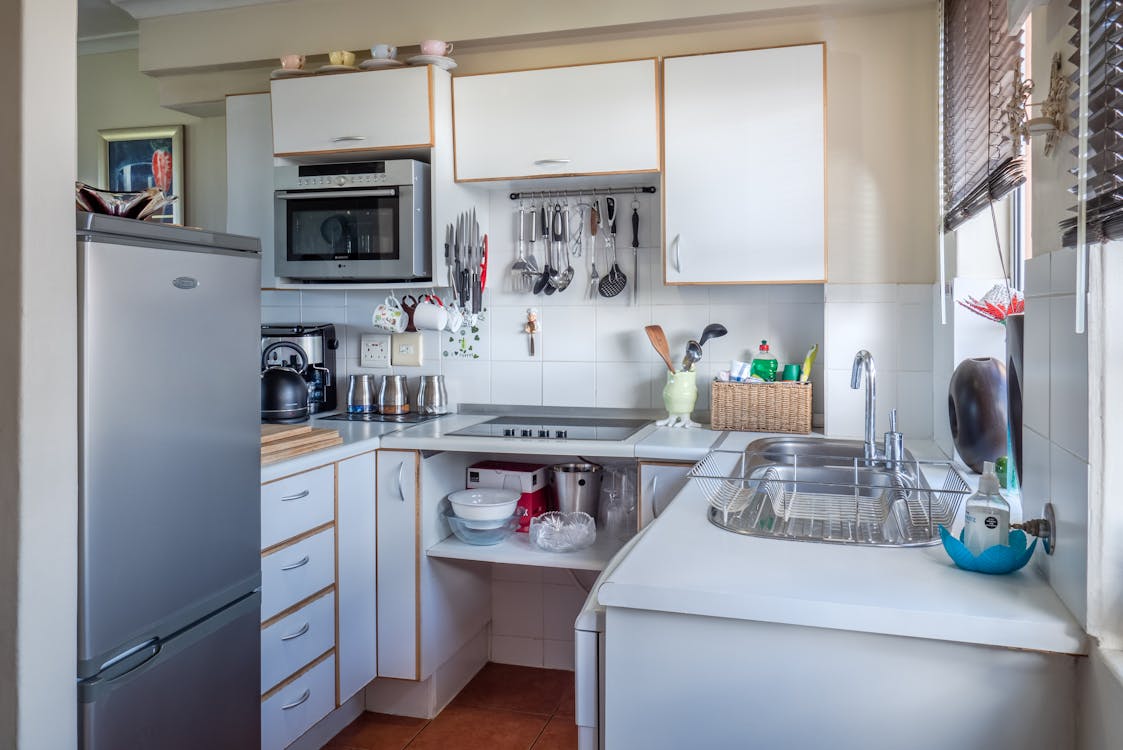
Are you tired of constantly searching for space to prep your meals in your kitchen? If so, you’re not alone. Many homeowners struggle with limited countertop space, making it difficult to cook and organize their kitchen efficiently.
Fortunately, there are a few layout designs that can help maximize your countertop space, allowing you to work more efficiently in the kitchen. In this section, we will explore two popular layouts: U-shaped kitchens and island kitchens. Let’s dive in!
U-shaped Kitchens
U-shaped kitchens are a fantastic option for homeowners who want to optimize their countertop space. This layout utilizes three walls, forming a “U” shape, and provides ample room for cooking, prepping, and storage. Here are some key advantages of U-shaped kitchens:
- Abundance of countertop space: With three walls to work with, U-shaped kitchens offer plenty of space for appliances, food preparation, and even additional seating.
- Efficient workflow: The compact design of a U-shaped kitchen allows for a seamless workflow, where everything you need is within easy reach.
- Maximized storage opportunities: The additional wall space in a U-shaped kitchen provides opportunities for more upper and lower cabinets, maximizing storage capacity.
Incorporating a kitchen island in a U-shaped layout can also boost its functionality and storage options. The island becomes an excellent spot for additional countertop space, seating, and extra storage.
Island Kitchens
Island kitchens are a popular choice for homeowners seeking to add both functionality and style to their kitchen design. A kitchen island is a freestanding piece of cabinetry placed in the center of the kitchen, often becoming the focal point of the space. Here’s why an island kitchen could be a game-changer for you:
- Versatile workspace: A kitchen island provides an expansive surface area that can be utilized for meal preparation, serving, or even as a casual dining space.
- Increased storage: By incorporating cabinets and drawers into the island, you can significantly expand your kitchen’s storage capacity.
- Enhanced social interaction: An island creates a gathering point in the kitchen, allowing you to cook and entertain guests simultaneously.
Additionally, for smaller kitchens, a portable or rolling island can offer flexibility, enabling easy movement and repositioning whenever necessary.
When considering an island kitchen, keep in mind the available space in your kitchen and how it aligns with the size and shape of the island. It’s crucial to strike a balance between functionality and traffic flow.
So, whether you opt for a U-shaped kitchen or an island kitchen, both layouts offer fantastic opportunities to maximize your countertop space and enhance the overall functionality of your kitchen. Take the time to assess your specific needs and kitchen dimensions before deciding on the best layout for your home.
Remember, a well-designed kitchen layout can significantly improve your cooking experience and make your daily tasks more efficient. Happy cooking!
Creating an Efficient Kitchen Layout

Having an efficient kitchen layout is essential for a smooth and streamlined cooking experience. It not only saves time but also enhances productivity in the kitchen. Whether you’re a professional chef or a home cook, eliminating wasted steps and optimizing the flow of your kitchen can make a significant difference. Let’s explore some key factors to consider when designing your efficient kitchen layout that maximize space.
Eliminating Wasted Steps
One of the primary goals of an efficient kitchen layout is to eliminate unnecessary movement and wasted steps. This means organizing your kitchen in such a way that the most frequently used items are easily accessible. Here are a few tips to achieve this:
- Working Triangle: Arrange your stove, refrigerator, and sink in a triangular formation, commonly known as the working triangle. This layout keeps the three most essential kitchen areas within easy reach, minimizing the distance you have to travel between them.
- Storage Proximity: Store pots, pans, utensils, and ingredients close to their respective work areas. For example, keep your pots and pans near the stove, and your cutting boards and knives near the prep area. This way, you won’t waste time running across the kitchen to grab the tools you need.
- Clear Countertops: Cluttered countertops can slow you down and make your workspace feel cramped. Keep your countertops clear of unnecessary items, leaving ample space for food preparation and cooking.
Wide Walkways
In addition to eliminating wasted steps, having wide walkways in your kitchen is crucial for a smooth workflow. Here’s why:
- Ease of Movement: Wide walkways provide enough space to move around freely, even when multiple people are working in the kitchen. This prevents any chances of collisions and allows for seamless navigation.
- Accessibility: A wider pathway can accommodate larger appliances and equipment, making it easier to maneuver them in and out of the kitchen. From dishwashers to refrigerators, having enough space to navigate bulky items is a game-changer.
Traffic Flow
When designing an efficient kitchen layout, it’s important to consider the flow of traffic through the space. The goal is to minimize congestion and create a functional environment. Here’s how to achieve proper traffic flow:
- Avoid Obstacles: Position countertops, islands, and cabinets in a way that doesn’t obstruct the natural flow of traffic. Ensure there is enough space for people to move around without any obstructions.
- Separate Work Zones: If possible, separate the cooking area from the dining area to avoid congestion during meal preparation. This allows multiple people to work simultaneously without getting in each other’s way.
In conclusion, an efficient kitchen layout that maximize spaces can greatly enhance your cooking experience. By eliminating wasted steps, having wide walkways, and directing traffic through the kitchen, you can create a functional and user-friendly space. So, take the time to carefully plan and optimize your kitchen layout that maximize spaces, and enjoy the benefits of a well-designed cooking environment.
Efficiency in Small Kitchens
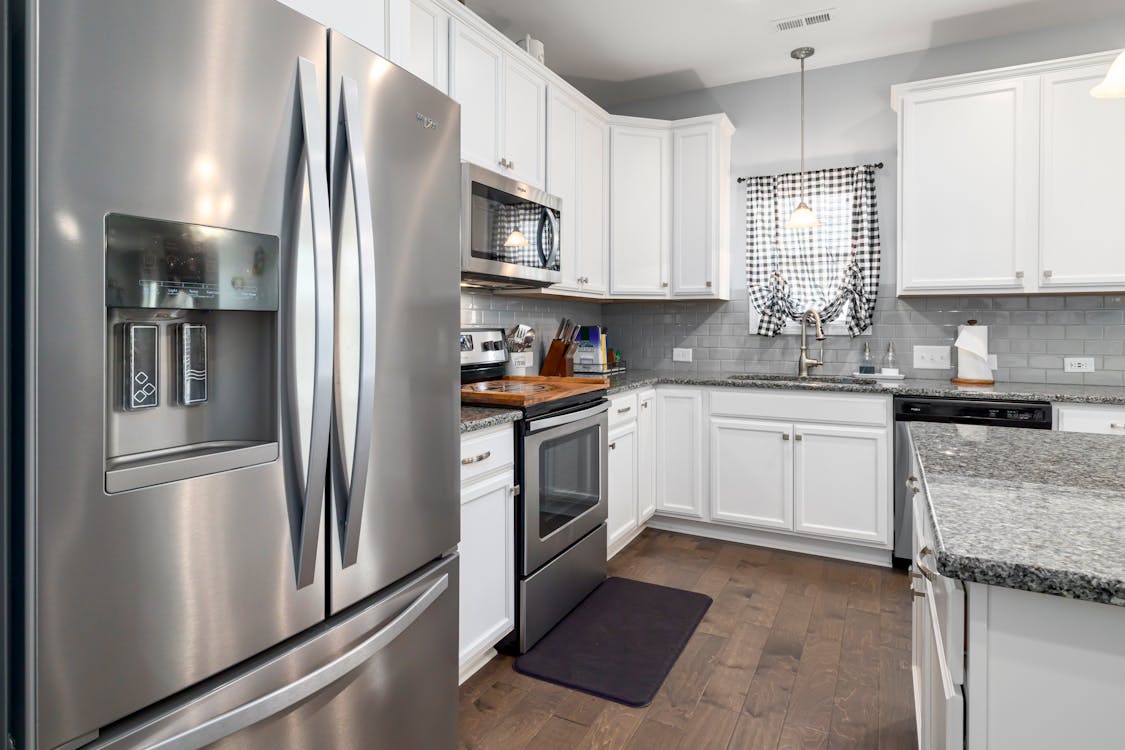
Small kitchens can present unique challenges when it comes to organization and functionality. However, with the right layout and design, even the tiniest of kitchens can be transformed into efficient and functional spaces. One such kitchen layout that maximize spaces in limited space is the galley layout.
Galley Layouts
Galley layouts are a popular choice for small kitchens due to their efficient use of space. In a galley kitchen, the counters and appliances are typically placed along two parallel walls, creating a narrow corridor-like space. This layout ensures that everything you need is within arm’s reach, making meal preparation a breeze.
Here are a few reasons why galley layouts are so effective in small kitchens:
- Maximizing Counter Space: With appliances and cabinets placed along the walls, galley layouts free up the central space for ample countertop area. This provides you with plenty of room for meal prep, chopping vegetables, and placing kitchen gadgets.
- Streamlined Workflow: The linear design of the galley layout ensures a smooth workflow in the kitchen. The distance between the cooking area, sink, and refrigerator is minimized, allowing for efficient movement while performing tasks.
- Optimal Storage: Galley kitchens often feature floor-to-ceiling cabinetry on both walls, providing abundant storage space for cookware, utensils, and pantry items. Utilizing vertical storage can help keep your kitchen organized and clutter-free.
- Traffic Flow: Since galley kitchens have a defined pathway, there is a clear separation between the cooking area and the rest of the house. This ensures that foot traffic doesn’t interrupt or hinder meal preparation.
It’s worth noting that while galley layouts are ideal for efficient kitchen layout, they may not be suitable for those who prefer an open-concept design or those who entertain frequently. However, with careful planning and smart design choices, a galley kitchen can be both functional and aesthetically pleasing.
So, if you’re working with a small kitchen space and want to maximize efficiency, consider opting for a galley layout. Its compact design, ample counter space, and streamlined workflow make it an excellent choice for small kitchens.
Considerations for Less Efficient Layouts
When it comes to kitchen layouts that maximize spaces, efficiency is key. A well-designed kitchen can make cooking and meal preparation a breeze, while a poorly laid out one can lead to frustration and wasted time. While there are many factors that contribute to the overall efficiency of a kitchen layout, one particular layout that may pose some challenges is the one-wall kitchen.
One-Wall Kitchens
A one-wall kitchen, as the name suggests, is a layout where all the major appliances, counter space, and storage are aligned on a single wall. This type of kitchen layout is commonly found in smaller homes, apartments, or studio apartments where space is limited. While one-wall kitchens can still be functional and stylish, there are a few considerations to keep in mind:
- Limited Counter Space: One of the main drawbacks of a one-wall kitchen is the limited counter space available. With all the appliances and storage taking up most of the wall, finding sufficient space for meal preparation can be a challenge. It’s important to plan for additional countertop space or utilize multi-purpose surfaces, such as a kitchen island or foldable dining table.
- Traffic Flow: In a one-wall kitchen, it’s crucial to consider the traffic flow. Since everything is aligned on a single wall, movement within the kitchen can become restricted, especially when multiple people are trying to move around and access different areas. It’s important to ensure that there is enough clearance space for easy movement and that the placement of appliances and cabinets does not obstruct the flow.
- Storage Solutions: Storage can be another issue in a one-wall kitchen. With limited wall space, it’s essential to make the most of vertical storage options. Consider installing tall cabinets or shelving units to maximize storage capacity. Additionally, utilizing under-cabinet storage solutions, such as hooks or magnetic strips, can help free up counter space and keep frequently used items easily accessible.
- Work Triangle Efficiency: The work triangle, which consists of the refrigerator, sink, and cooktop, is an essential concept in kitchen design. In a one-wall kitchen, it’s important to carefully consider the placement of these key elements to maintain a functional work triangle. Placing them too far apart can make food preparation and cooking more challenging.
Despite these considerations, one-wall kitchens can still be an excellent choice for smaller spaces or as part of an open-concept layout. By implementing smart storage solutions and considering traffic flow, it’s possible to create an efficient and stylish kitchen even with limited space.
Also Read : The Art of Downsizing: Simplifying the Moving Process with Minimalism
Conclusion
In conclusion, efficient kitchen layouts play a crucial role in maximizing space and functionality. By considering the latest trends in kitchen cabinets, embracing open-concept designs, optimizing workflow in restaurant kitchens, and maximizing countertop space, homeowners can create a kitchen that is both aesthetically pleasing and highly practical. Implementing strategies such as eliminating wasted steps, incorporating wide walkways, and considering traffic flow can further enhance the efficiency of a kitchen layout.
Even in small kitchens, there are ways to maximize efficiency, such as utilizing galley layouts. While less efficient layouts like one-wall kitchens may have their downsides, they can still be functional with careful planning and organization.
At Arkitecture Today, we understand the importance of efficient kitchen design. Our blog provides inspiration, ideas, and expert advice on how to create the perfect kitchen layout for your space. Whether you’re looking for modern, sleek designs or cozy, rustic charm, we have you covered.
For more information and inspiration on kitchen and interior design, visit Arkitecture Today. Let us help you transform your kitchen into a space that is both beautiful and efficient.
Frequently Asked Questions
- What are the key factors to consider when designing an efficient kitchen layout?Key factors to consider when designing an efficient kitchen layout include functionality, workflow, storage solutions, proper placement of appliances, and optimizing counter and storage space.
- What are some popular kitchen layout that maximize space and functionality?Popular kitchen layout designs that maximize space and functionality include the L-shaped layout, U-shaped layout, galley layout, and open concept layout. Each design offers unique benefits and suits different kitchen sizes and configurations.
- How can I make the most of my kitchen’s storage space?To make the most of your kitchen’s storage space, consider utilizing vertical storage solutions such as tall cabinets and wall-mounted shelves, installing pull-out drawers and organizers in cabinets, and using space-saving accessories like hanging pot racks and magnetic knife strips.
- What are some space-saving ideas for small kitchens?Some space-saving ideas for small kitchens include using multifunctional furniture and appliances, maximizing wall and vertical space with shelves and hooks, utilizing compact storage solutions like hanging baskets and magnetic spice racks, and minimizing clutter through proper organization.
- Should I consider hiring a professional kitchen designer to optimize my efficient kitchen layout?Hiring a professional kitchen designer can be beneficial, especially if you have specific requirements or a complex space. They can provide expert advice, suggest innovative solutions, and help create a functional and visually appealing kitchen layout that optimizes your space.




